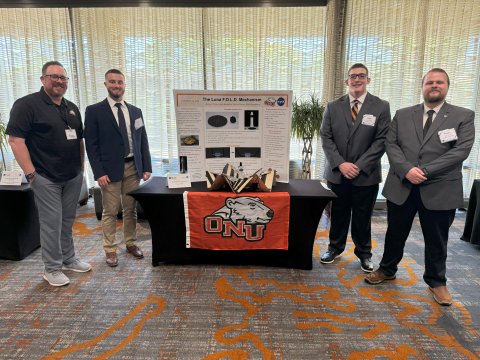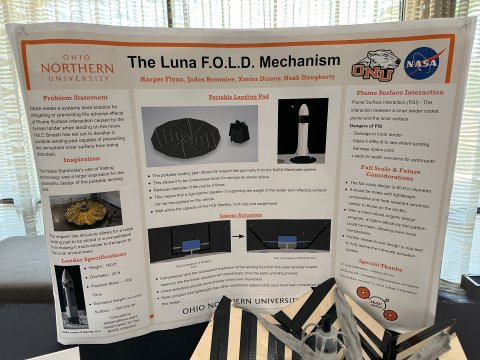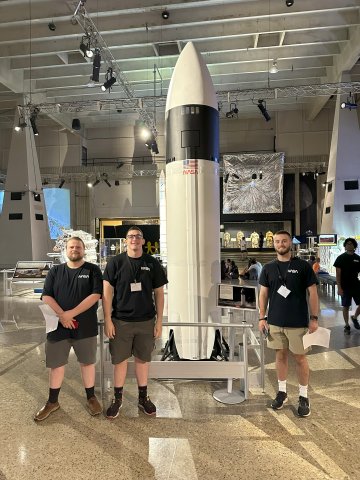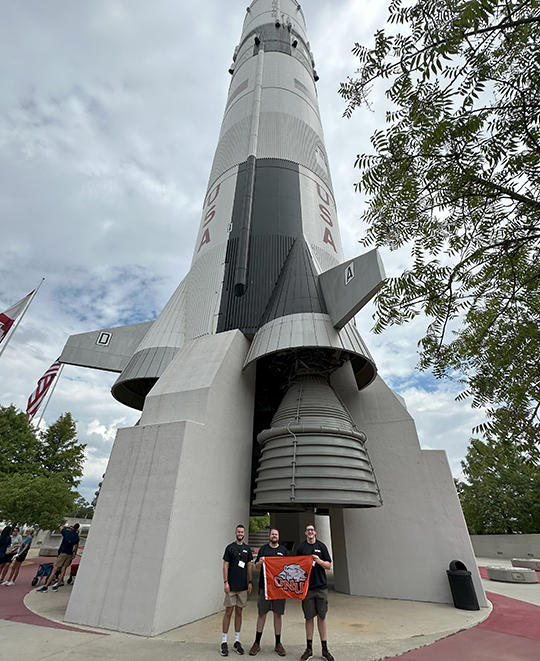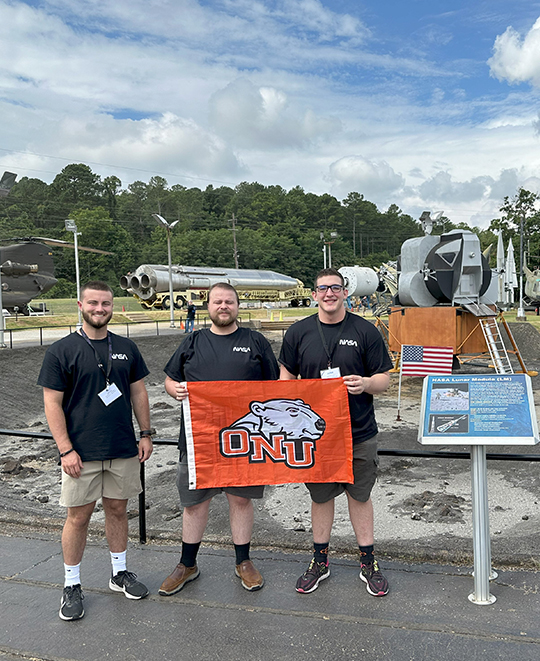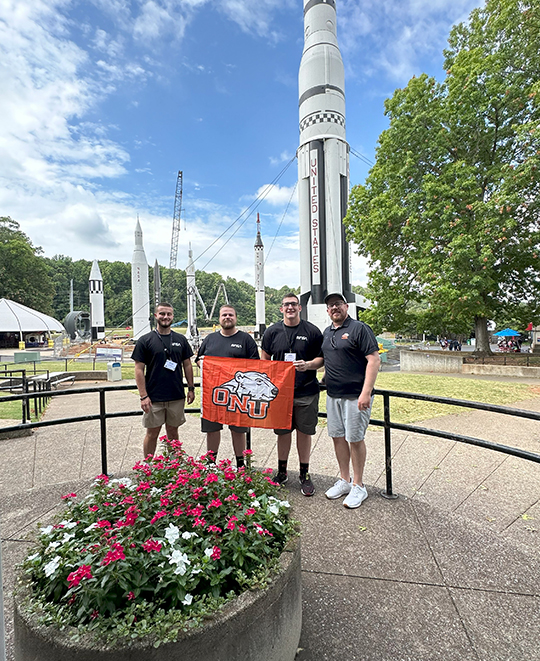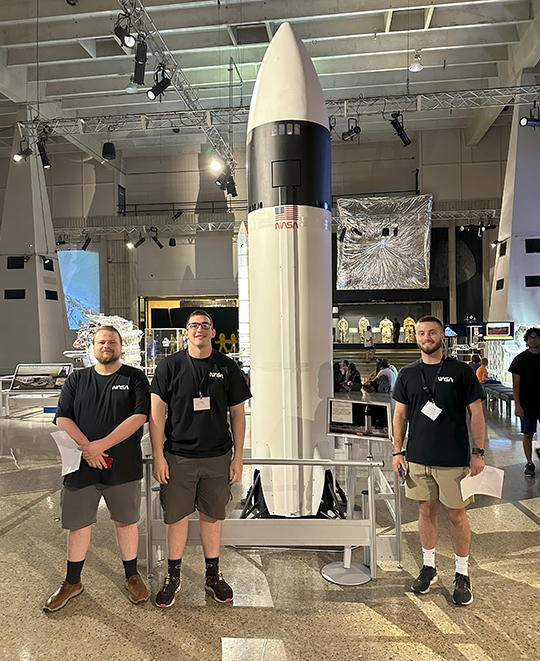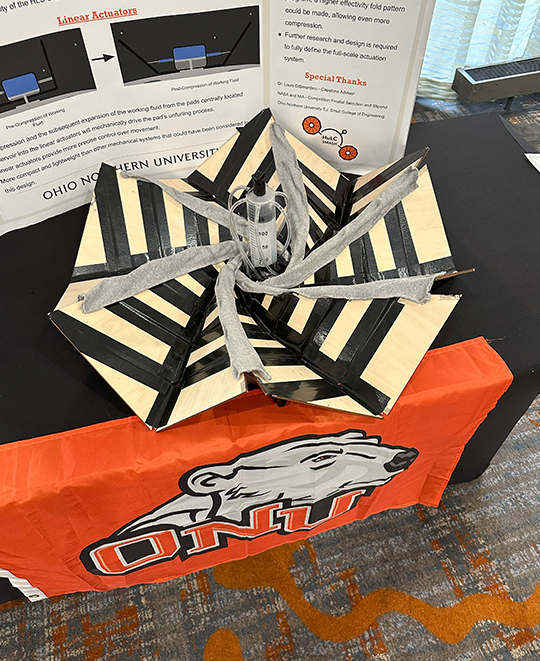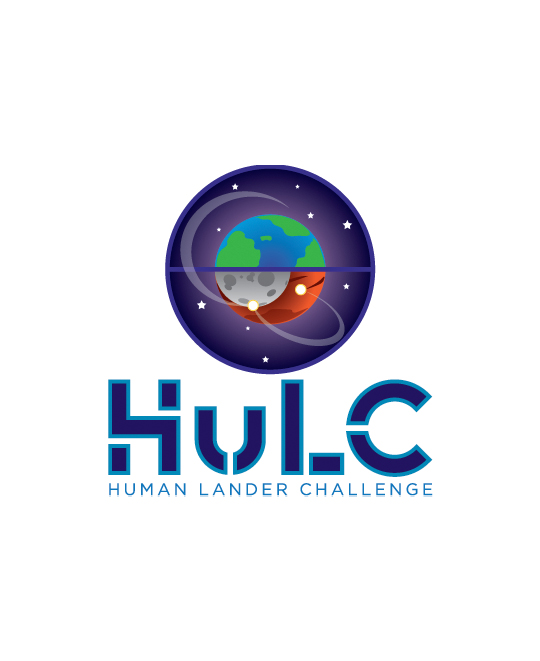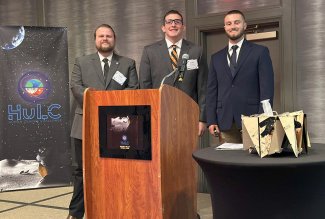
Four Ohio Northern University engineering students devised an ingenious mechanism to combat plume surface interaction—the interaction between the rocket exhaust (plume) and “lunar dust”— during NASA’s upcoming Artemis landings on the moon’s surface.
And this week, NASA validated their mechanical solution when ONU’s team was one of 12 finalists to present to NASA and industry experts at the Human Lander Challenge (HuLC) final round at the Marshall Space Flight Center in Huntsville, Ala., June 24-27.
ONU was the smallest university among the 12 finalists which included teams from prominent, large universities such as Embry Riddle Aeronautical University, Texas A&M, University of Michigan, University of Colorado-Boulder, and University of California-San Diego.
When NASA announced ONU’s team as a finalist in late March, Harper Flynn, BSME ’24, who led the capstone team, was immediately overcome with a sense of pride.
“I expect a lot out of myself in everything I do and to get recognized as a finalist team in a national competition like this is a big deal,” he said.
Louis DiBerardino, Ph.D., associate professor of mechanical engineering, advised the capstone team. In addition to Harper, mechanical engineering majors Noah Daugherty, BSME ’24, Xavier Disney, BSME ’24, and Jadon Brownlee, who will graduate in spring 2025, comprised the team.
The four teammates selected NASA’s HuLC competition for their senior capstone project because they share a passion for the aerospace industry. ONU’s College of Engineering offers an aerospace concentration for mechanical engineers.
“My fascination with aerospace coupled with my appreciation for the field’s technology, and joining this project seemed like a no-brainer,” said Xavier.
An additional incentive, said Noah: “This specific project was for near-future missions so there’s a chance one of the projects in this competition could make it to the moon.”
HuLC is sponsored by NASA’s Human Landing System (HLS) Program and managed by the National Institute of Aerospace. NASA reports that through Artemis it will “land the first woman, first person of color, and its first international partner astronaut on the moon, paving the way for a long-term, sustainable lunar presence to explore more of the lunar surface than ever before and prepare for future astronaut missions to Mars.”
For the competition, collegiate teams were invited to create a solution to protect the HLS and other mission critical assets from the negative effects poised by plume surface interaction during its descent onto and ascent away from the unprepared lunar surface, explained Harper.
“The dust, or regolith from which the lunar surface is composed, is very abrasive and holds a net static charge, meaning that it will not only cling to these assets if given the chance but will also shred them to pieces,” he said.
Because most technical information on Artemis is still classified, the ONU team had to make estimations and assumptions using data from previous NASA moon landings going all the way back to Apollo, explained Dr. DiBerardino.
“They were a pretty ambitious team, but the biggest hurdle they had to overcome was all the unknowns,” he said.
The team brainstormed several ideas that they ultimately discarded due to feasibility. They settled on a purely mechanical solution: a foldable mat that would act as a physical barrier between the regolith and the landing module. They named their innovative mechanism Luna-F.O.L.D.— Folding Origami Lunar Deployment, and dubbed their project HuLC Smash.
“This device has two main components: a foldable origami landing pad, and a centrally-located system of linear actuators that will be used to expand the landing pad upon impact with the lunar surface,” explained Jadon. “When the landing pad is deployed from a rocket in its confined form, it will land on the base of the central fluid reservoir which will act as a large syringe and send working fluid into the arms of the actuators, effectively unfurling the landing pad.”
Origami is the ancient art of paper folding that originated in Japan in the 6th century.
“Its use in modern technology is a fairly new field,” noted Noah. But one only has to look at the vehicle airbag to see its potential for objects and structures that need to be reduced and then enlarged for various reasons.
For the lunar dust challenge, origami engineering proved just the ticket, added Harper.
“Three aspects of the design make our solution unique: the use of origami as the basis for the device’s design, the device being purely mechanical in nature, and it being capable of fully unfurling without any human intervention,” he explained. “Reducing complexity of any design is a must in space industry applications like this.”
He noted that in its stored/furled state, the pad is approximately five times smaller (12 feet) than the pad’s diameter when it is completely unfurled (60 feet).
“A smaller size means that it can be transported to the moon in a smaller rocket, inherently saving NASA and its participating industry partners money.”
Getting the prototype designed and constructed proved the most difficult part of the project, as every part on the pad and every actuator arm needed to be precisely placed in order to work. The students refined their skills in 3D modeling software and in project management.
“Collaboration was key throughout the design process,” said Harper. “No decision was ever made without the team discussing it first.”
When they had a working prototype, it was not only a huge relief, said Noah, “but it was also just really cool to see an origami mechanism work like it does.”
NASA awarded each of the 12 finalist teams a $9,450 stipend to facilitate participation in the competition’s final round, which included the submission of a final technical paper and poster and presentation of their concepts to a panel of NASA and industry subject matter experts at the Forum at the Marshall Space Flight Center.
“Working on this project for the past year has shaped me into a better engineer and leader,” said Harper.
Dr. DiBerardino added, “It was such an amazing accomplishment for the team, as they were going up against a lot of teams from larger schools and graduate students as well. They did a great job under a lot of pressure. I think it speaks to the quality of engineering education they received at ONU.”
